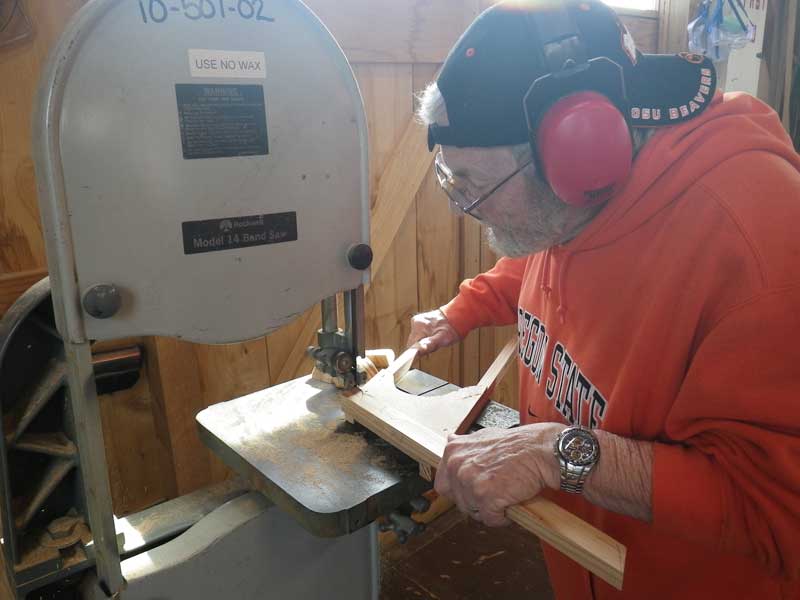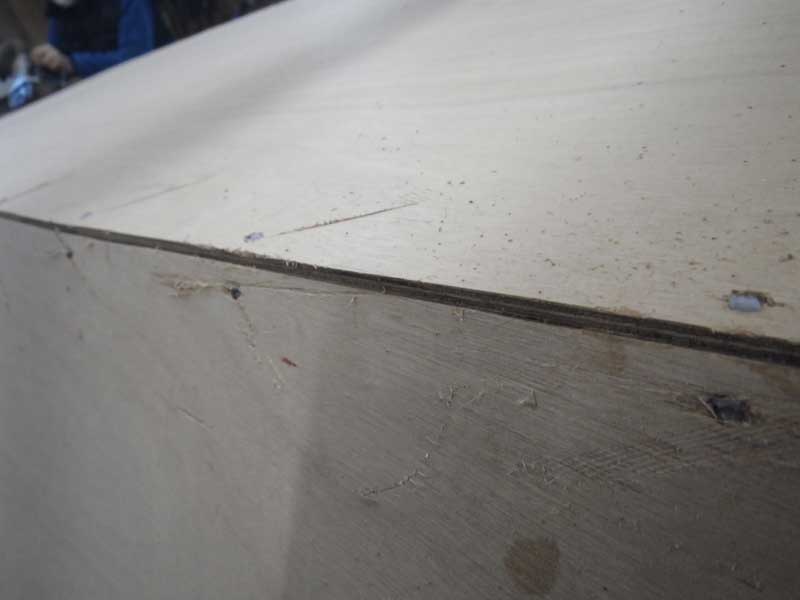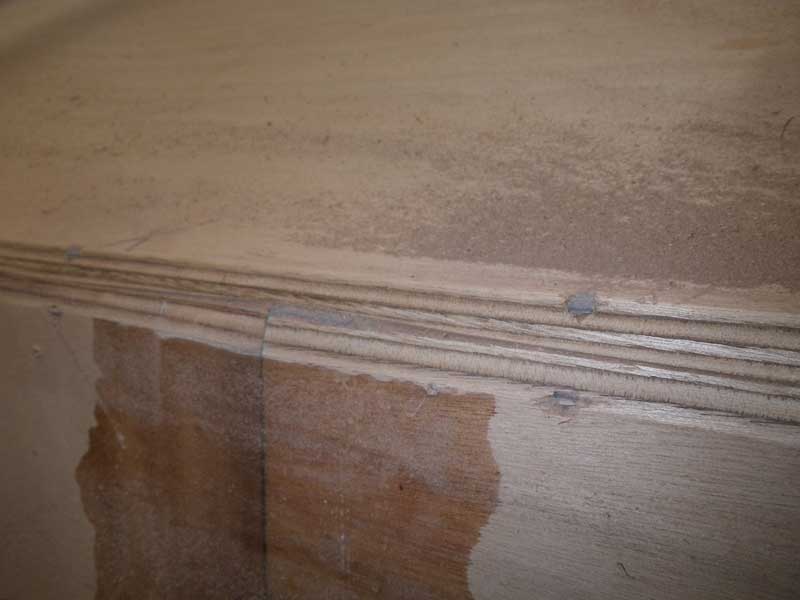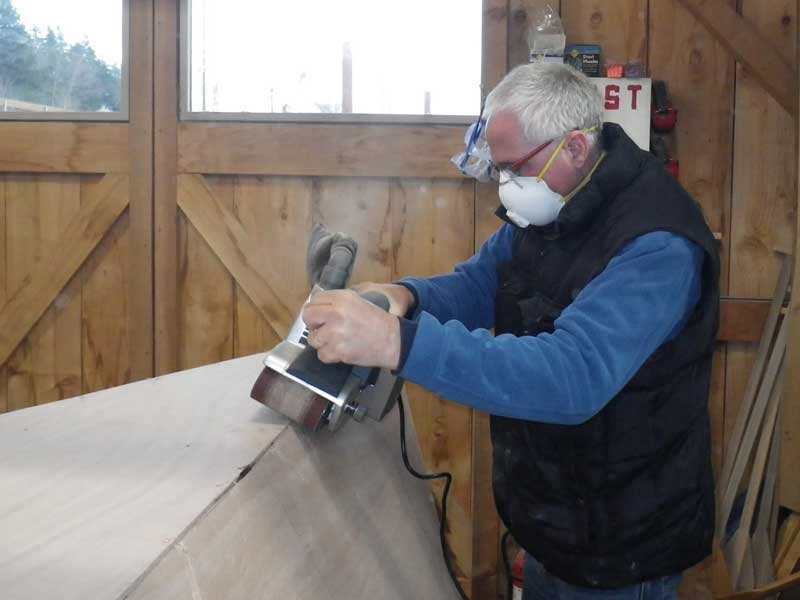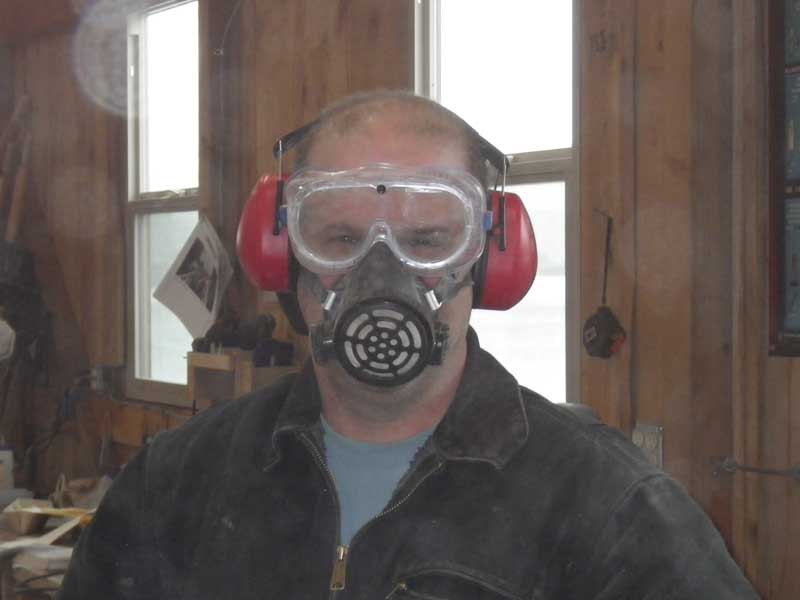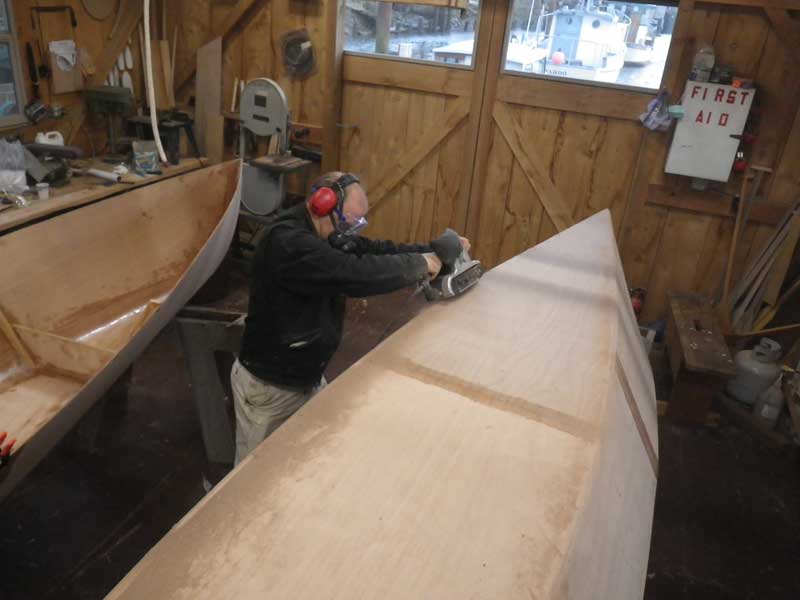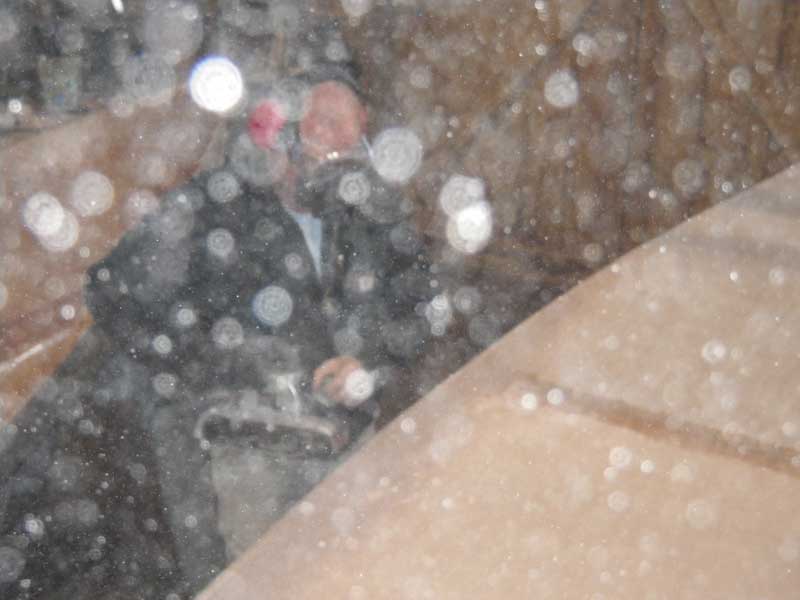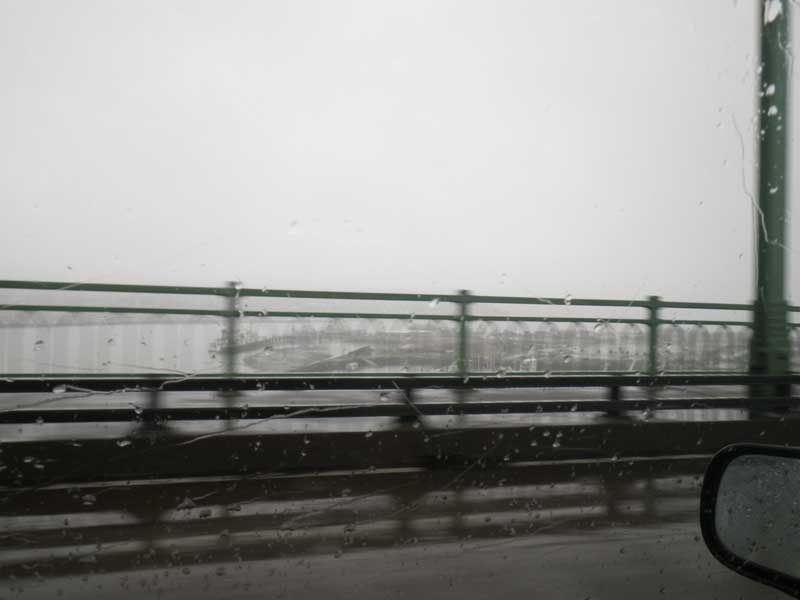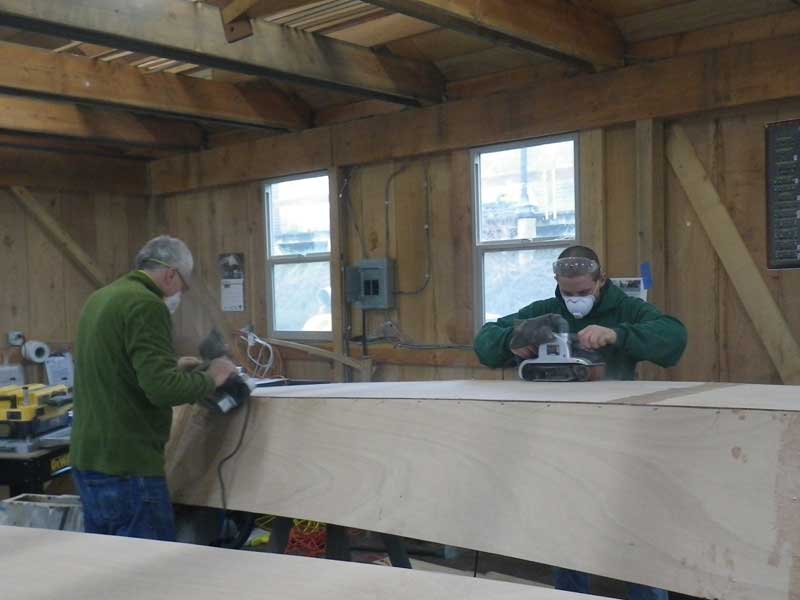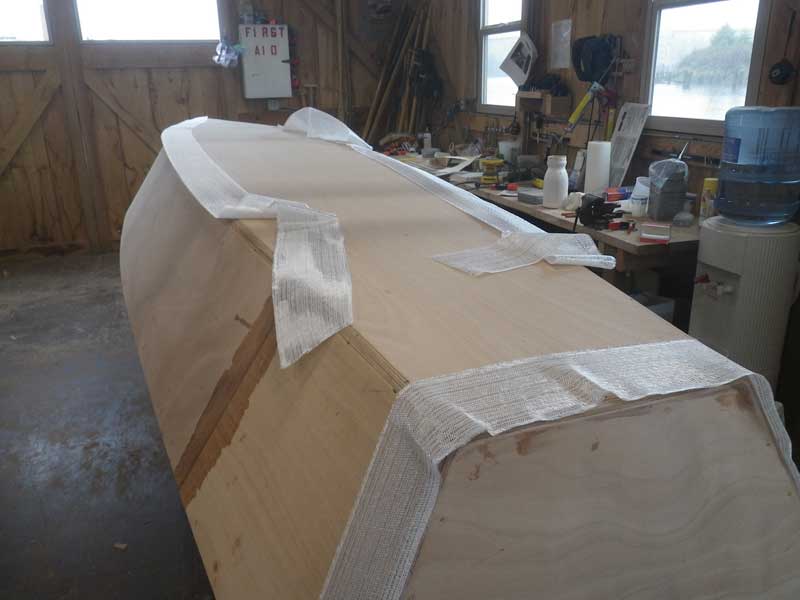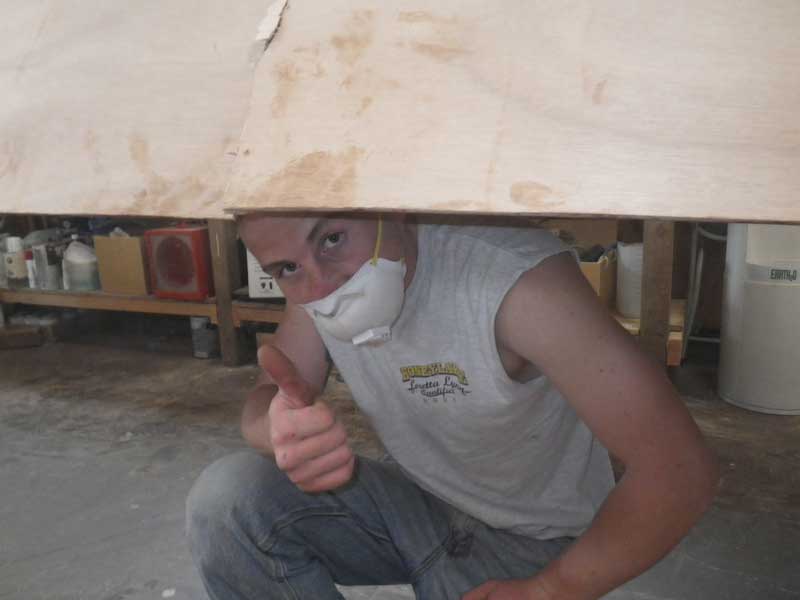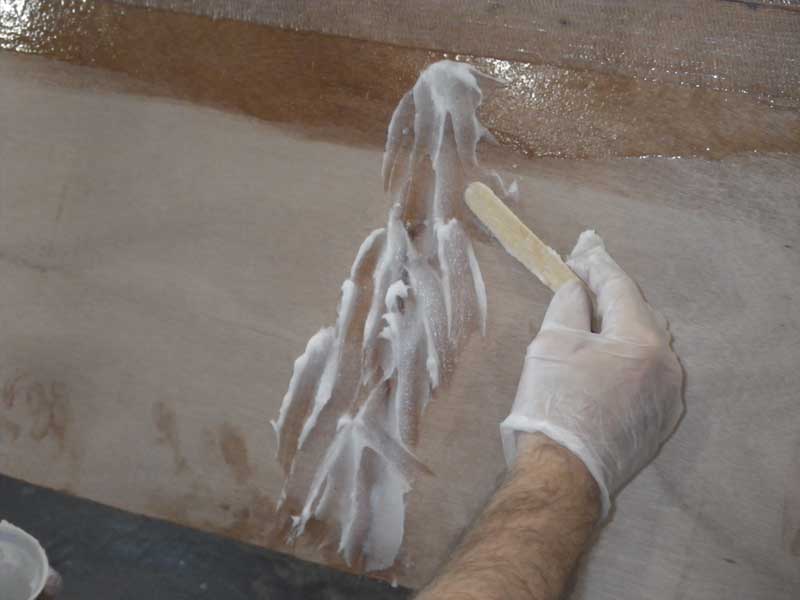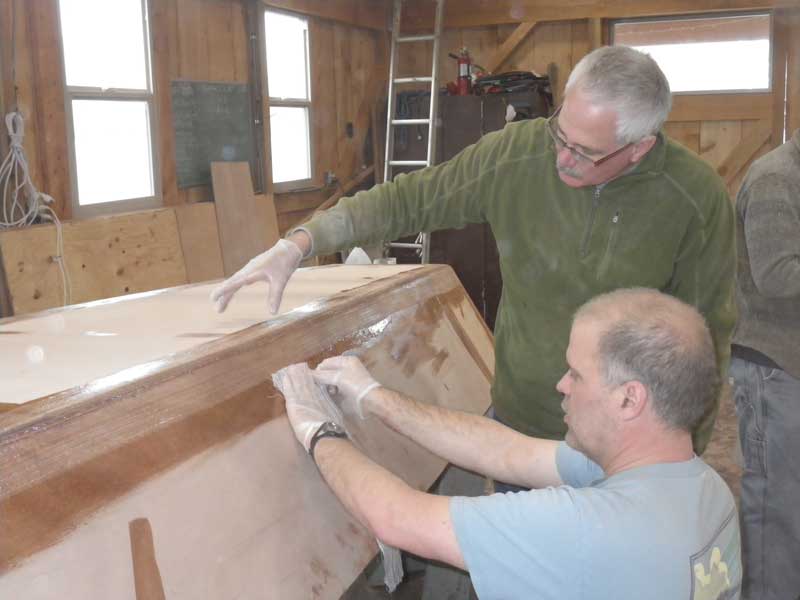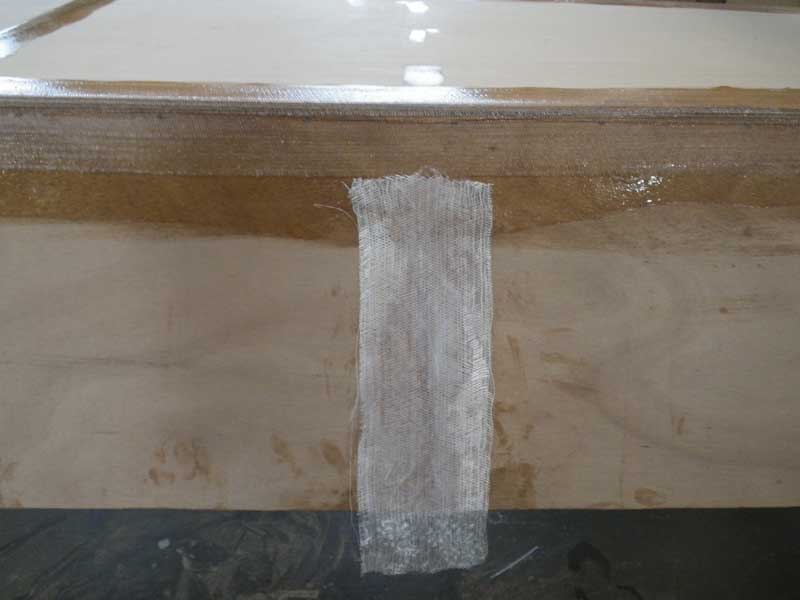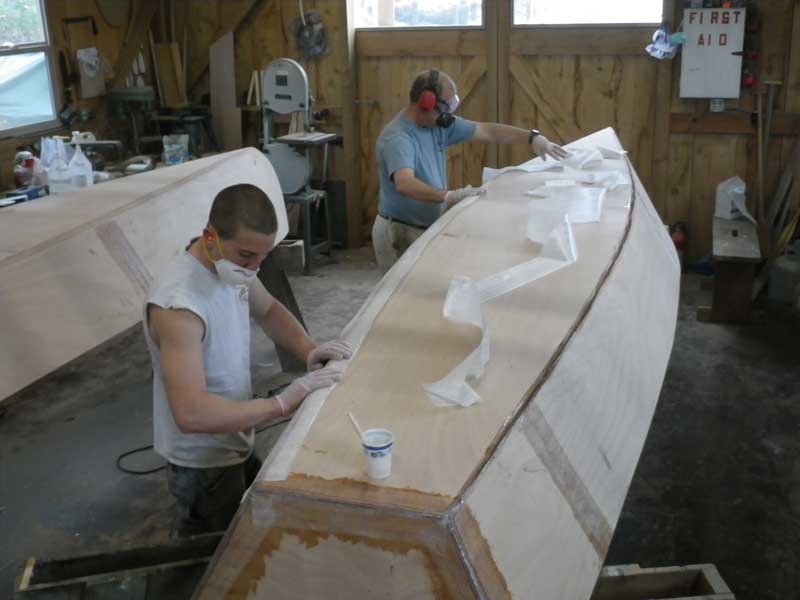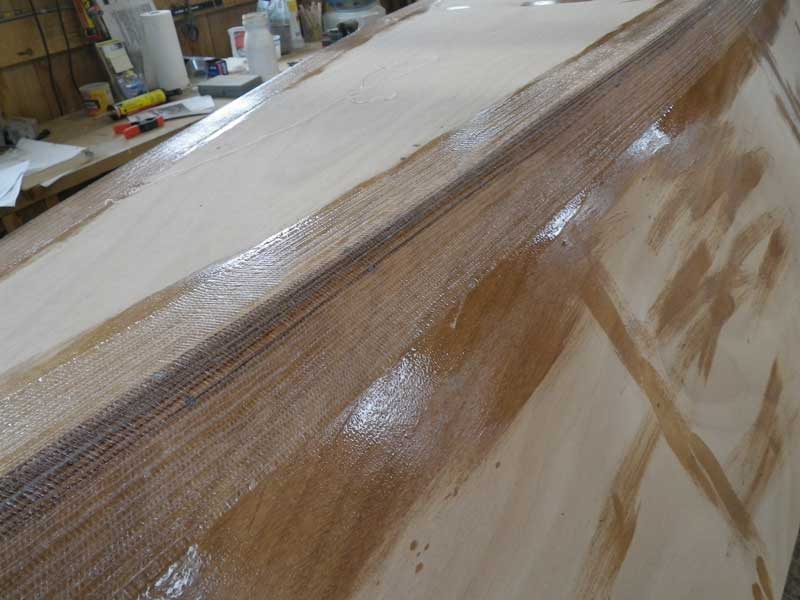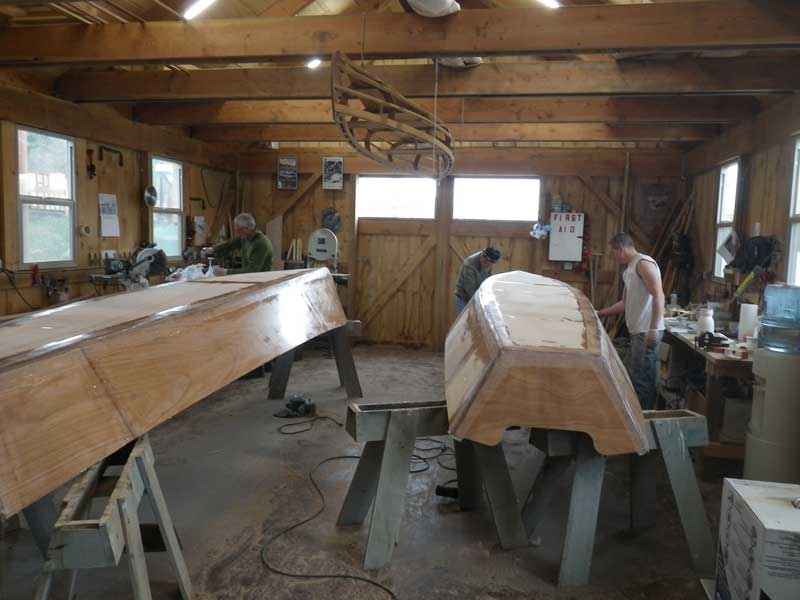|
Working on the Mollyhawks, Week
5 When last we left, one Mollyhawk had the chines glued and frames installed and the other just had chines glued and frames cut. Our task this week was to get fiberglass tape down the exterior chines.
Bob M dropped by to see what was going on, so I put him to work cutting limber holes in the frames that go under the rowing seats. He'd never run a bandsaw before, so that was really cool.
Our goal was to grind off the exterior corners to where they are very nicely rounded - going from this . . .
. . . to this - you really can't see it, but we grind down to where the plywood meets then round. It is all very nice.
Here's Bud using the belt sander with 50 grit paper. Notice his breating mask? That's because ground up epoxy is toxic.
I buy safety gear for the guys, but they rarely use it. For myself, I have a respirator, ear protection, and goggles. This is important.
Here's what it looks like when I am using my dust mask
and here's what it looks like without a mask. Yes, all that crap is floating in the air, waiting to kill you. Wear your dust mask.
Saturday dawned wet and nasty. I had to swing by Barrelhead to pick up some more belts for the sanders.
This is the kind of crap you see in Oregon: Nutters running along a bay in filthy weather. Actually, the Newport Marathon is reputed to be a pretty good race - a nice, flat, out-and-backer small enough to allow a moderate runner to qualify for Boston.
Friday was spent grinding the corners on one boat and installing the frames on the other boat. Saturday started with the grinding of the second boat. Sean and Bud were hard at it. Take a peek at Sean - see the placement of his safety goggles? You can lead a horse to water, but you can't prevent him from going blind.
6" wide, 6oz fiberglass tape for the seams. After years of doing this, I finally figured out to cut the pieces first, before I am up to my eyeballs in 'pox and goop.
Just three minutes ago, I saw Sean take his finger off the power and set his belt sander on the boat while it was still winding down. I told him "That's a 50 grit belt on there, it'll tear through the plys. It's a much better idea to set the sander on the floor rather than the boat." Next thing you know, he needs to move the sander to another power outlet, so he unplugs it, lets it wind down, sets it on the hull - with the trigger locked down, and plugs it in to another outlet. The sander shoots off the boat, flies across the gap, and slams into the other boat, smashing a great gash in the other boat's hull (pictured over his head.)
Good thing there's no problem that can't be fixed with epoxy and fiberglass. We pushed the pieces back together and sanded of the rough edges, mixed up a batch of thick epoxy . . .
. . . laid out a strip of cloth . . .
. . . and smoothed it all out. People won't even be able to tell there was ever a break (but we are still going to tease Sean about it.)
Work progressed
We wetted out the cloth and then kept going around and around, making sure we smoothed out any runs.
And that's how we ended this session: both boats in the same state. On the inside, the frames were installed and glued into place. On the outside, the chines were sanded and covered with fiberglass tape and epoxy. Our final step was to give the sides their first coat of 'pox. Next week: 'Glass the bottoms, coat 'em with epoxy and graphite, and finish out the outsides. It's going to be tight to get these done by the Depoe Bay Boat Show, but I think we'll make it.
|

